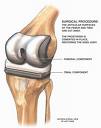 Are Metal Implants Safe with The Infrex Tens & Interferential Modes?
Are Metal Implants Safe with The Infrex Tens & Interferential Modes?
Is there, or should there be, a concern for patients who have had metal implants inserted and then start using a tens or interferential unit?
This is a question that has been asked many times over the past half century as both the field of implant technology improved as did the field of electrotherapy for pain, rehab., and non union fractures. The question is a fair one to ask not only from a safety perspective but also from the other angle of does an implant enhance the efficacy of an external tens stimulator or interferential machine.
Basically the implant is outside the electrical field of a tens unit so there is no effect generally. Also many new composites for implants do not have metal or electrically conductive materials in them so over the next few years the question may become moot. Tens units are powered by a 9 volt battery and lack enough energy to penetrate deeply into the tissues but with the advent of Interferential for home use the chances of interference become more pragmatic.
A tens/tns unit emits no more than 150 pulses per second ( how many times the unit goes off and on per second - pps/rate/freqeuncy ) however an interferential unit has a pps between 8,000 and 8,150 pps with greater penetration. The higher frequency and greater output bring into play the depth of penetration issue and does an underlying metal object help or hurt the treatment.
Most tens and interferential devices are used principally for the control, or elimination, of chronic pain such as sciatica, RSD, neuralgia, phantom limb pain etc. The treatment with interferential though is for short periods of time due to the interferential unit providing " carryover pain relief " or residual pain relief. The interferential unit is not generally worn by a chronic pain patient, unlike tens which only provides relief while being used.
To date there are not any true safety issues brought on by the use of interferential or tens units with patients having implanted metal devices. The single issue has been does the stimulation cause any degree of discomfort to the patient while being treated and if so the practical answer is to move the electrodes so the implant will not interfere with the sensory relief provided by the interferential or tens unit. It's possible if the pain area is near the implant that the conductivity of the materials used may actually enhance the pain relief.
When an interferential unit is used for home use it is generally assumed the short treatment period versus the continual treatment with tens lessens the potential of implant interference with an interferential unit.
|
Bob Johnson is owner/founder of MedFaxx, Inc., and has multiple patents for non pharmacological treatment of chronic pain, decubitus ulcers, using electrotherapy and ultraviolet F.D.A. approved medical devices. The Infrex Plus unit, http://www.painreductiontherapy.com/index.php?/Videos/how-to-use-the-infrex-plus-unit-for-pain-reduction.html, is a combination device that uses tens and interferential in one unit and is generally paid for by most insurance companies, including Medicare, with a medical doctor's prescription. Article Source: http://EzineArticles.com/?expert=Bob_G_Johnson |
 |


